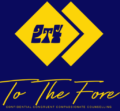"Supposing a tree fell down, Pooh, when we were underneath it?""
Supposing it didn’t," said Pooh.
AA Milne - Winnie the Pooh
Common Mental Health Issues
Click on a tab to learn more
... And the ways counsellors approach them with their clients
Click on a tab to learn more
Purist
Purist Approach
Definition: In the purist approach, a counselor adheres strictly to one specific theoretical framework or modality (e.g., CBT, psychodynamic, person-centered).
Focus: The therapist applies the principles, techniques, and interventions of a single model without blending other approaches.
Strengths: This approach allows for deep expertise and consistency in a given modality. It's particularly effective when the chosen model aligns well with the client's issues.
My Approach
Integrative
Integrative Approach
Definition: The integrative approach will generally have a strong foundation in a core approach but draws on knowledge of other theories and techniques, where these may be helpful to the client. When done skillfully and professionally that knowledge is conveyed to the client seamlessly and without having a detrimental effect on the main style being used.
Focus: A personalized blend of methods is used based on the client's needs, but the therapist carefully chooses approaches that are compatible and cohesive.
Strengths: Offers flexibility while maintaining a structured, holistic framework. It ensures the therapy is tailored without feeling fragmented.
Integrated
Integrated Approach
Definition: This is similar to the integrative approach, but it emphasizes the creation of a new, unified theory by synthesizing elements of multiple approaches into a singular model. The integration is theoretical as well as practical.
Focus: Instead of mixing techniques from separate models, an integrated approach develops a new framework that merges aspects of various theories into a seamless, consistent model.
Strengths: Provides a deeply cohesive framework that is designed to address multiple facets of the client’s experience, combining theoretical elements into a single, new method.
*CARE: Some counsellors who declare themselves as "Integrated" are not, and are more eclectic in style.
Info Box
Eclectic Approach
Definition: The eclectic approach involves selecting techniques from a variety of theories without necessarily adhering to a single model or creating a unified theoretical framework.
Focus: The therapist chooses interventions based on what seems most effective for the client's specific issues, with flexibility to shift between techniques as needed.
Strengths: Highly flexible and adaptable, allowing the therapist to respond directly to the client's immediate needs and preferences without being confined to a specific model.
Thinking you may find value in working with me?
Contact me on my secure data form
